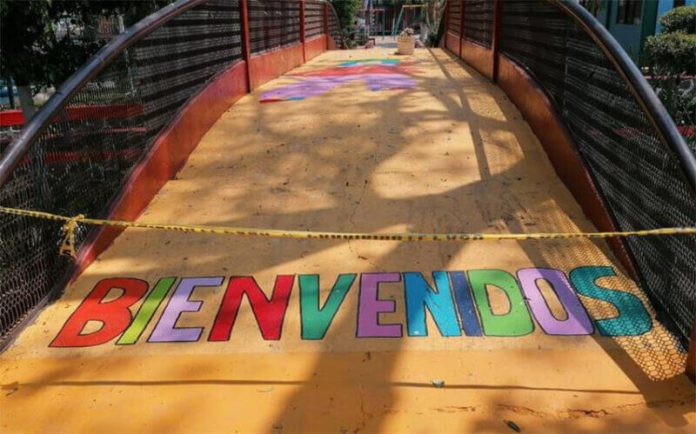Since the pandemic started, quite a lot of my time, energy and money have been spent on finding ways to entertain my daughter.
In the early days, back when we thought we’d be at home for a couple of weeks, a month tops (remember those days?) — something similar to the precautions we took during the swine flu scare (remember those days?) – we did a lot of painting to pass the time.
She and I had just moved, so we turned the box from the new oven into an elaborately decorated playhouse for her and started on several mural projects in our backyard that I was much more enthusiastic about than she was.
We spent a lot of time trying to make our days special for just the two of us: we’d eat outside, plucking blackberries from the bushes. We instituted “Pancake Saturdays” and “movie parties,” which really is just an exciting name for watching a movie on the couch while eating popcorn.
I bought her some roller skates so that we could have some fun skating around some nearby trails, and we would spend anywhere from two to four hours outside most days just doing that.
I bought what seemed an endless supply of toys: bubbles, Play-Doh, puzzles, Hula-Hoops, balls, Legos. We have Netflix and Amazon. She has a tablet, books, a playroom and, if we’re being honest, as much unlimited screen time as I imagine most kids have these days.
And yet, nothing has beat human contact. Though I know she is among the most privileged children in the country right now, I mourn on her behalf the time she’s not been able to spend time with kids her age.
Though school has officially begun “in-person,” currently about half of all students in Mexico are either not enrolled or simply not attending because their parents are nervous about them contracting the virus or simply used to having some more helping hands at home.
My daughter has yet to attend in-person classes. The short version of why is that I would like her to — since her mostly outside, small-groups school is about as safe as any educational institution could possibly be — but her father is still a bit panicky about sending her.
But regardless of the permissions we may or may not have at any point for school attendance, the time for my daughter and me to be cooped up in our own house is over — neither of us can stand it anymore.
Lately, she’s not into skating or taking walks. What she wants are parks (and by parks, I mean playgrounds).
Parks are places where she might possibly run into other kids, which is her biggest hope. Parks are places where neither I nor any screen is responsible for entertaining her. She can be free and creative, and she can explore and be creative with her strong little body.
This, however, is not a pleasure I can easily give her, at least not for free. Here in Xalapa, many of the centrally located and popular playgrounds remain as closed now as they were at the beginning of the pandemic.
While not all parks here have fences around them, several close-by ones do, and even a few open-air ones have caution tape around them.
Playgrounds and video arcades like PlayTime at the mall, as well as playgrounds at restaurants, however, are open for business, meaning that children are only able to entertain themselves on playgrounds if their parents can pay for the privilege.
This, my friends, is not cool at all. Places for people with money are open. Places for people without money are not open … and that’s basically the way it’s been around here, at least in my city.
Pandemic or not, kids need to play and be outside, and they need interaction with other kids. The refusal to open places for them to do that without cost is, in my opinion, a violation of their rights, especially given what we now know about how comparatively safe being outside is.
My heart breaks for all the special things about my daughter’s childhood that she’s missing because we’re still in this damned pandemic. And my daughter has more privileges than so many kids around her.
What are the kids who don’t have even half of what she does doing during all this? It’s almost as if they’ve disappeared. They’re not gathering around schools. They’re not in the parks. A few of them can be seen at pay-to-play places.
So, where are they? This, my friends, is something that should worry us.
Sarah DeVries is a writer and translator based in Xalapa, Veracruz. She can be reached through her website, sdevrieswritingandtranslating.com and her Patreon page.
